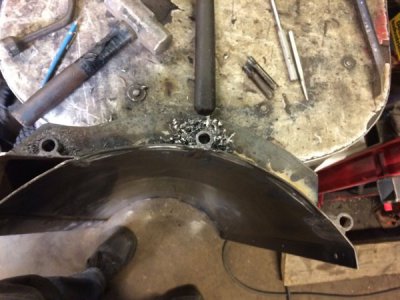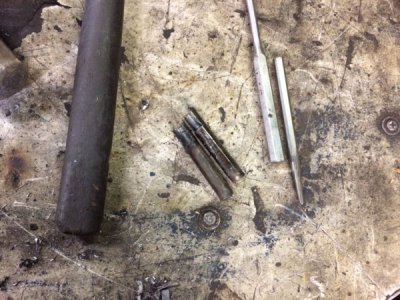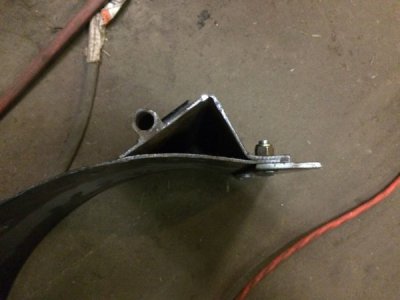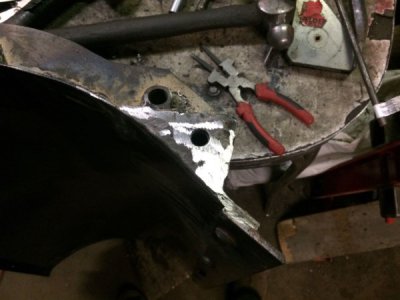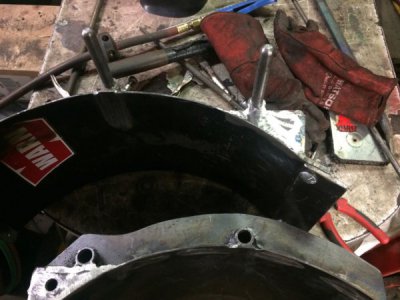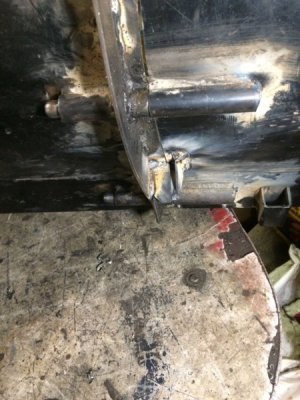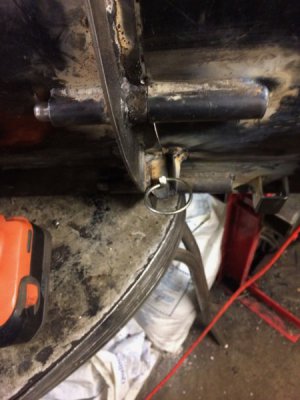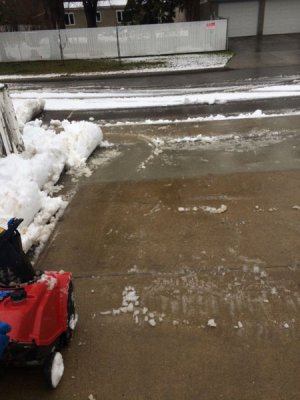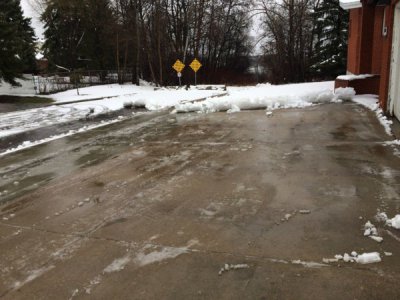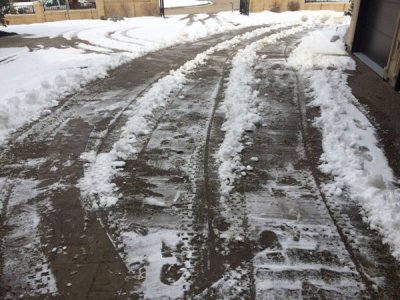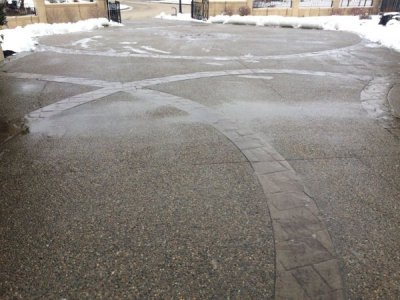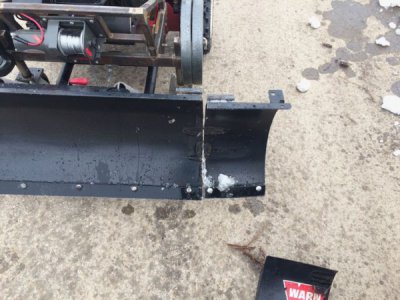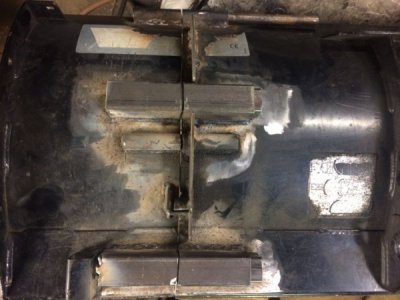And the result of those bits welded together again looks like this:
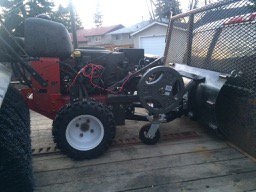
It just fits with the power brush in it's usual location, with room for a 2-stage 28" snowblower right in front on the power brush..
The revised setup is definitely better, the plow can lift further up without any danger of damaging the drive unit (there were a couple cross members and the two hydraulic motors that could have been bent/damaged by the plow lifting too high), as the plow now mounts to the very front edge of the drive unit. With the whole weight of the plow on the front, it goes up and down the ramp on the truck feeling much less like it wants to go over backwards (but I still have to be careful, as it's pretty powerful and the controls are twitchy).
Now to take it off, maybe grind some of the uglier welds flat and paint it up. I might also look for some thick flat iron that I could bolt to the front of my "weldment" instead of using those weights, to get the center of gravity a bit lower and towards the front.

It just fits with the power brush in it's usual location, with room for a 2-stage 28" snowblower right in front on the power brush..
The revised setup is definitely better, the plow can lift further up without any danger of damaging the drive unit (there were a couple cross members and the two hydraulic motors that could have been bent/damaged by the plow lifting too high), as the plow now mounts to the very front edge of the drive unit. With the whole weight of the plow on the front, it goes up and down the ramp on the truck feeling much less like it wants to go over backwards (but I still have to be careful, as it's pretty powerful and the controls are twitchy).
Now to take it off, maybe grind some of the uglier welds flat and paint it up. I might also look for some thick flat iron that I could bolt to the front of my "weldment" instead of using those weights, to get the center of gravity a bit lower and towards the front.

